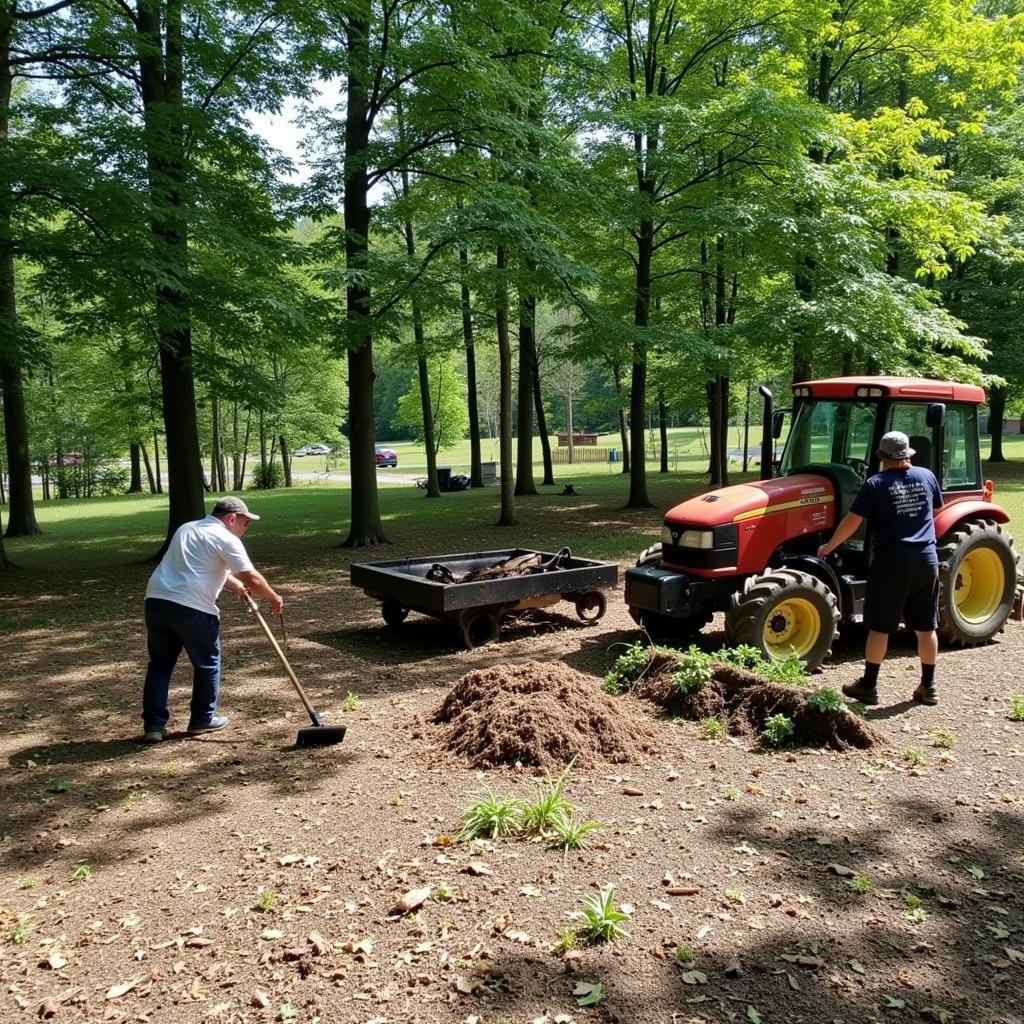Growing a thriving food plot in a shaded area can feel like a daunting task. However, with the right knowledge and a bit of planning, you can transform even the most shaded corners of your property into a haven for wildlife. This guide will explore the best food plot options for shaded areas, ensuring your efforts result in a successful and productive plot.
Choosing the Best Food Plot For Shaded Areas requires understanding the specific challenges shade presents. Reduced sunlight directly impacts plant growth, influencing everything from germination to overall yield. Knowing which plants tolerate these conditions is key to success. Shortly after planting your shaded food plot, you may want to consider a best food plot mix for deer in a sunnier location to provide additional forage.
Choosing Shade-Tolerant Plants
Several plant species thrive in partial shade, offering excellent forage for deer and other wildlife. These include:
- Ladino Clover: This highly palatable legume is known for its shade tolerance and resilience. It provides excellent nutrition throughout the growing season.
- Chicory: A deep-rooted perennial, chicory can withstand shade and drought conditions while offering a valuable source of forage. A clover chicory food plots combination can be especially beneficial in shaded areas.
- Brassicas: While some brassicas prefer full sun, certain varieties, like rape and turnips, can tolerate partial shade. These cool-season crops offer a late-season food source.
Preparing Your Shaded Food Plot
Soil preparation is crucial for any food plot, especially in shaded areas. Because sunlight is limited, ensuring optimal soil conditions is paramount for plant growth.
- Soil Testing: Begin by testing your soil pH and nutrient levels. This will help you determine necessary amendments.
- Clearing Debris: Remove any fallen leaves, branches, and rocks that could hinder plant growth and sunlight penetration.
- Improving Drainage: Shaded areas can retain moisture, leading to poor drainage. Amending the soil with organic matter, like compost, can improve drainage and soil structure.
- Liming and Fertilizing: Based on your soil test results, apply lime and fertilizer to create the optimal growing environment.
 Preparing a food plot in a shaded area
Preparing a food plot in a shaded area
Planting and Maintaining Your Food Plot
Timing your planting is essential, especially for cool-season crops like brassicas. Knowing [when to plant spring food plots](https://minacones.com/when-to plant-spring-food-plots/) and adjust accordingly for shade is important. Plant your chosen seeds according to package directions, ensuring proper depth and spacing.
Maintaining your food plot involves regular monitoring and occasional intervention.
- Weed Control: Weeds can compete with your food plot plants for limited resources. Implement appropriate weed control measures to ensure your plot thrives.
- Soil Moisture: Monitor soil moisture levels, especially during dry periods. Supplemental watering might be necessary in some cases.
- Fertilization: A mid-season fertilizer application can boost plant growth and nutrient content.
“Shaded areas don’t have to be a lost cause for food plots,” says wildlife biologist, Dr. Sarah Miller. “By selecting the right plants and implementing proper management techniques, you can create a valuable food source for wildlife even in areas with limited sunlight.”
Maximizing Your Shaded Food Plot’s Potential
Consider creating a transition zone between shaded and sunny areas. This can involve gradually thinning the tree canopy to allow more sunlight to reach the plot. Planting a mix of shade-tolerant and sun-loving plants can also maximize the overall productivity of your plot. You could even consider a best food plot for deer and turkey that takes advantage of both sun and shade.
In conclusion, establishing a successful food plot in a shaded area requires careful planning and selection of appropriate plant species. By following these guidelines and understanding the specific needs of shade-tolerant plants, you can create a thriving food plot that attracts and nourishes wildlife, even in areas with limited sunlight. Don’t let shade discourage you – embrace the challenge and transform those shaded areas into valuable food sources for the wildlife on your property.
FAQ
- What are the best food plot plants for shaded areas? Ladino clover, chicory, and certain brassicas are good choices.
- How do I prepare the soil for a shaded food plot? Test the soil, clear debris, improve drainage, and amend with lime and fertilizer as needed.
- When should I plant my shaded food plot? Follow the recommended planting times for your chosen seeds, considering the cooler temperatures of shaded areas.
- How do I maintain my shaded food plot? Control weeds, monitor soil moisture, and provide supplemental fertilizer as needed.
- Can I improve the sunlight in a shaded area? Gradually thinning the tree canopy can increase sunlight penetration.
For further guidance on timing, refer to our resource on when to plant turkey food plots.
Need assistance with your food plot? Contact us at Phone: 02437655121, Email: minacones@gmail.com or visit our address: 3PGH+8R9, ĐT70A, thôn Trung, Bắc Từ Liêm, Hà Nội, Việt Nam. We have a 24/7 customer service team ready to help.